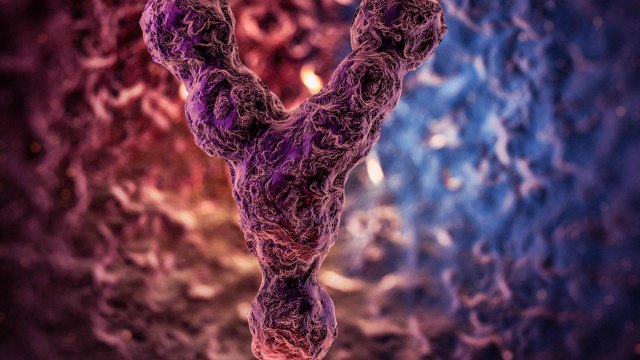
For years, scientists have toiled to crack the sequence of the Y chromosome, the male sex chromosome. However, its complex structure poses huge challenges. But all their efforts have now paid off: the full sequence of the elusive Y chromosome has finally been mapped.
This milestone not only completes the spectrum of human chromosomes but also introduces a wealth of new information to the human genome reference. This crucial addition, primarily from the intricate satellite DNA regions, comprises a staggering 30 million bases. The new analysis fills in critical gaps spanning over half of the Y chromosome’s length.
Among the novel findings are 41 brand-new protein-coding genes that will likely lead to a new understanding of reproduction, evolution, and the dynamics of human populations, but also genetic diseases such as cancer.
“Now that we have this 100% complete sequence of the Y chromosome, we can identify and explore numerous genetic variations that could be impacting human traits and disease in a way that we weren’t able to do before,” said co-first author Dylan Taylor, a Johns Hopkins geneticist and doctoral candidate.
Decoding the Y Chromosome
The Y chromosome, alongside its counterpart, the X chromosome, is widely recognized for its role in sexual development. While these chromosomes significantly contribute to the diversity of human sex characteristics, it’s important to note that human sexual development involves intricate interplay across the entire genome.
This intricate genetic dance between various chromosomes gives rise to the diverse range of characteristics seen among individuals, regardless of gender. Recent research suggests that the Y chromosome contributes to other areas of human biology beyond sexual development, including cancer risk and severity.
The monumental task of sequencing the male sex chromosome was spearheaded by the Telomere-to-Telomere (T2T) consortium, which involves more than 100 international scientists. The same consortium was responsible for unveiling the complete sequence of a human genome in 2022. That prior work focused on two X chromosomes, but over 50% of the Y chromosome’s sequence remained enigmatic.
The Y chromosome has always been a tough nut to crack. It’s notorious for its elusive and repetitive molecular patterns organized in palindromes — sequences that read the same forwards and backward — spanning even more than a million base pairs.
Imagine trying to read a book that’s been cut into strips. If each strip carries unique information, it’s easier to arrange and glue them back into readable pages in a sequence that makes sense. However, when the same sentence recurs countless times, the original order becomes elusive. Was this bit of content on page 3 or 57? There is no easy way to tell. Approximately 30 million letters (bases) of the Y chromosome consist of repetitive sequences, akin to finding the same few sentences repeating for half the book’s length.
Cracking the Repetitive Code
To unravel the mysteries of these repetitive stretches, the T2T Consortium harnessed cutting-edge DNA sequencing technologies, innovative assembly methods, and insights gleaned from sequencing the other 23 human chromosomes without gaps.
Dr. Adam Phillippy, a senior investigator at NHGRI and leader of the consortium, remarked that “the biggest surprise was how organized the repeats are. We didn’t know what exactly made up the missing sequence. It could have been very chaotic, but instead, nearly half of the chromosome is made of alternating blocks of two specific repeating sequences known as satellite DNA. It makes a beautiful, quilt-like pattern.”
This now complete Y chromosome sequence sheds light on numerous genes that could be targeted by therapy. For instance, the azoospermia factor region houses genes linked to sperm production. The researchers zoomed in on the structure of “palindromes” in this region — inverted repeats that occasionally form DNA loops. Such loops can inadvertently lead to deletions in the genome, disrupting sperm production and potentially affecting fertility. With the comprehensive Y chromosome sequence, scientists can meticulously analyze these deletions and their repercussions on sperm production. In the process, there may be a way to reverse this anomaly.
T2T also found repeating genes. These genes, in contrast to the usual two-copy structure, are organized in arrays along stretches of DNA. TSPY, a gene implicated in sperm production, was uncovered in the Y chromosome sequence. The analysis revealed that different individuals carried between 10 and 40 copies of TSPY.
“When you find variation that you haven’t seen before, the hope is always that those genomic variants will be important for understanding human health,” said Dr. Phillippy. “Medically relevant genomic variants can help us design better diagnostics in the future.”
Moreover, this achievement significantly contributes to understanding human population evolution. Unlike other chromosomes, the Y chromosome is passed down with little recombination, allowing researchers to trace genetic changes across generations.
In parallel with the T2T research, the Human Genome Structural Variation Consortium has published the sequences of 43 distinct human Y chromosomes. These advancements, coupled with the comprehensive human genome sequence and the recently released “pangenome,” signal an era of unprecedented opportunities to unravel the intricacies of human biology.
The groundbreaking findings appeared in the journal Nature.









